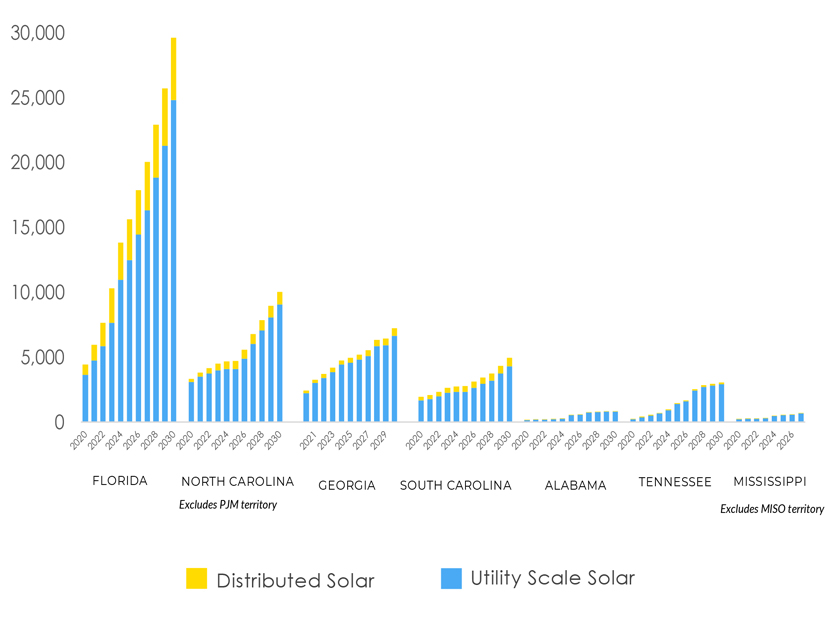Utilities and regulators no longer can afford to think of extreme weather and grid-directed violence as separate reliability risks, a speaker at SERC Reliability’s Fall Reliability and Security Seminar said.
Travis Moran, SERC’s senior state government and regulatory affairs adviser, reminded seminar attendees that U.S. electric utilities have seen numerous close calls from attempted violence in recent years, including a plot by neo-Nazi leader Brandon Russell and an accomplice to attack electric substations in Baltimore in order to set off a civil war. (See Neo-Nazi Convicted in Baltimore Grid Attack Conspiracy.) Moran also mentioned Skyler Philippi, who recently pleaded guilty to planning a bomb attack against a substation in Tennessee.
While those schemes were thwarted by law enforcement, Moran asked attendees to think about what would happen if such attacks went as planned — and how a severe weather incident at the same time would complicate efforts to restore electric service. Experts have warned about this kind of attack before, but Moran emphasized that the danger is far from hypothetical.
“Militaries [have] known this doctrine for a long time — ours has and everyone’s around the world,” Moran said. “Russia is using it to great extent right now. They’ve been attacking Ukraine’s [energy infrastructure], always heavily during and before the winter months … to increase the suffering. The hope was that that suffering would lead them to cave; it didn’t work out that way, but the suffering is still great.”
The appeal of such a strategy is obvious, Moran said, because it means potential attackers “don’t have to create the chaos [but can] just wait for nature to do it.” As an example, he pointed to Hurricane Helene in 2024, when millions of customers across 10 states lost power. (See Helene Repair Efforts Could Last Weeks for Hardest Hit, Remote Areas.)
Restoration took weeks in some cases because the remote locations of some substations meant “roads couldn’t even support the heavy equipment they were trying to get in.” Repair prospects would have been even worse if attackers had taken advantage of the coming storm to damage key equipment such as transformers and repair crews had to find a way to deliver those through devastated infrastructure.
“You know they know this. Why would I want to attack you on a 65-degree day when there’s low load on the system? … All I got to do is pay attention to the weather forecast, and I can exacerbate the suffering of [everyone]. It’s just common sense, unfortunately, and that’s how they think,” Moran said. He added that the danger is not limited to physical attacks; enemies could easily choose to launch cyberattacks against utilities’ electronic systems while they are preoccupied with extreme weather restoration.
Staying ahead of determined adversaries will require equal determination from the grid’s protectors, Moran said, along with a willingness to learn. This means information sharing within their organizations, between employees on the same level and between management and lower-level employees.
Utilities also must be open about their challenges with each other, with regulators, and even with counterparts in other industries. Moran observed that utilities increasingly are co-dependent with data centers, which provide the computing power for many business processes but also account for a rapidly growing share of demand that, if interrupted suddenly, could cause stability problems on the larger electric grid. Given this vulnerability, he said, it makes sense for the electric and data center industries to work more closely.
Throughout his talk, Moran quoted the 9/11 Commission Report, which partly blamed a “failure of imagination” for the federal government’s inability to predict the Sept. 11, 2001, terrorist attacks that destroyed the World Trade Center and damaged the Pentagon. He stressed to attendees that “we shouldn’t want to be here again,” and that “if you can imagine it, [our enemies] have already thought about it.”
“You’re your own best protectors,” Moran said. “Your information that you share internally, and those contacts you have internally, that’s what’s going to save you.”

